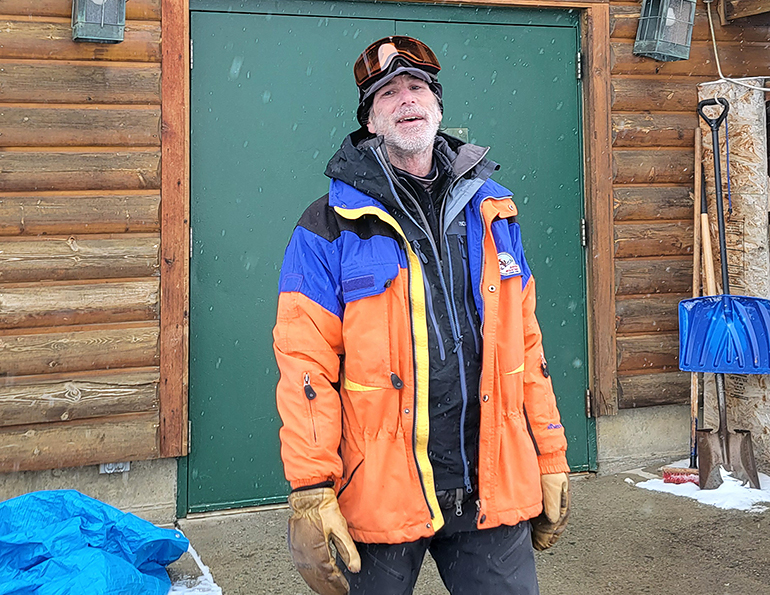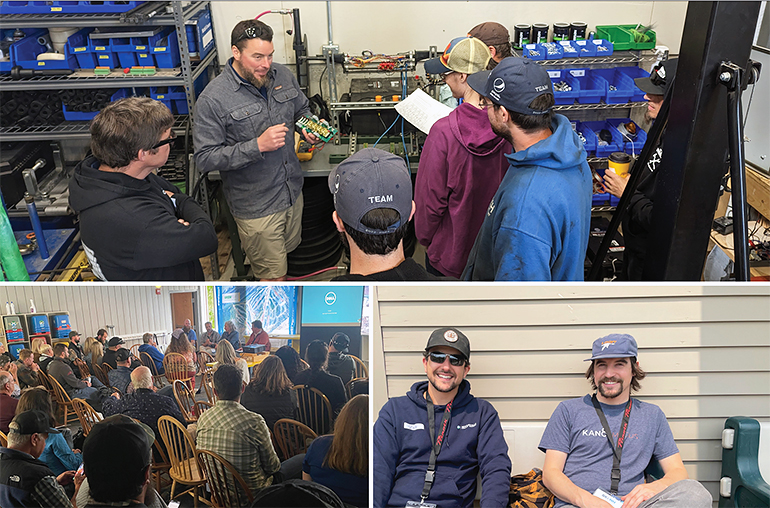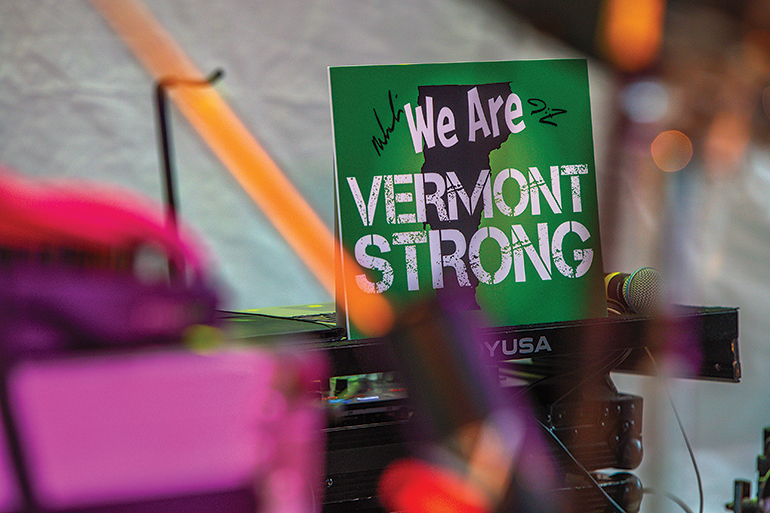From the consumer point of view, the North American ski industry is a showdown between big corporations, a few major resorts, and small ski areas trying to survive on their own. The perception of fierce competition—exacerbated by online rhetoric from those outside of, and some within, the industry—pits the big vs. the small, the corporate vs. the independent. And while this perception may sometimes be true, it often looks a bit different from the operator’s perspective. In many cases, the relationship between big and small is less about competition and more about collaboration, cooperation, and support.
Take, for example, Utah’s Beaver Mountain. In the early 2000s, The Beav was in desperate need of staff uniforms, says owner and mountain manager Travis Seeholzer.
“At the time, we were just not in the [financial] position to get them,” he says. “And then Alta Ski Area stepped in. They gave us an entire collection of hand-me-down uniforms, in good shape and [of]great quality. We put our patches on them and were good to go.”
 Giving the shirt off their backs: Alta Ski Area generously donated employee jackets to neighbor resort Beaver Mountain.
Giving the shirt off their backs: Alta Ski Area generously donated employee jackets to neighbor resort Beaver Mountain.
Alta, he says, has long played big brother to smaller nearby resorts, helping areas like Beaver Mountain, Wyoming’s Pine Creek, and others. “They’re kind of famous for it,” says Seeholzer.
Big brotherhood. Alta is not alone. Across North America, bigger resorts are helping smaller hills get by, both in times of crisis (like, for instance, a broken lift in need of a part) and in times of learning and growing. And—surprise, surprise—it sometimes goes the other way, with a smaller resort helping a larger one noodle a challenge, like when leaders from Vermont’s Stratton Mountain toured nearby Hermitage Club’s timber-frame base lodge to help inform potential future projects.
“Generally speaking, the ski industry is very unique in the sense that we are all in this together,” says Loon Mountain, N.H., general manager Brian Norton. “Pepsi doesn’t call Coke and ask for a tour of their factory, like we were all invited to do at Killington’s (Vt.) new base lodge last year. And Anheuser Busch doesn’t call Coors Brewing Company and offer to let them borrow a transformer when something fails at a Coors plant. This stuff is commonplace in our industry, and, frankly, truly amazing.”
ACCESSIBILITY OF SUPPORT
In January, members of the board of directors for Ski New Hampshire (Ski NH) were reviewing the dialogue from a fall meeting they held for small, independent resort owners. Their goal was to plant the seeds for a more cooperative partnership. They aimed to understand how the bigger areas and the industry as a whole could help, embrace, and include smaller areas, and how to make being a part of Ski NH feasible for places that currently can’t afford membership.
“We sat them down and said, ‘We want you to have a voice. Help us understand what our weaknesses are,’” remembers Tim Smith, president and GM of Waterville Valley and current board chair of Ski NH.
 Counter clockwise from the top: In Ski NH’s Low Voltage Seminar for Lift Mechanics, experienced lift mechanics from various mountains help others learn the tricks of the trade; At Ski NH’s annual conference last year, the small ski area roundtable drew a large crowd; Peers from Waterville Valley Resort and Loon Mountain Resort hang out during a break between sessions. These events foster relationships that ease future collaboration.
Counter clockwise from the top: In Ski NH’s Low Voltage Seminar for Lift Mechanics, experienced lift mechanics from various mountains help others learn the tricks of the trade; At Ski NH’s annual conference last year, the small ski area roundtable drew a large crowd; Peers from Waterville Valley Resort and Loon Mountain Resort hang out during a break between sessions. These events foster relationships that ease future collaboration.
The Ski NH team learned that it’s difficult for personnel from smaller areas—where budgets are tight and staff wear multiple hats, putting time at a premium—to access educational and networking events with other resort operators.
“We have to figure out a way to bring them in without further burden, but also not let them off the hook,” Smith says. Ski NH hopes to create some kind of new membership level to make that happen.
“That’s important,” he says. “NSAA (the National Ski Areas Association) is great, but more close-to-home shows really do help smaller places more. We need to come up with a sort of ‘trade show on wheels’ to get that kind of experience and information to them.”
Operators of small ski areas can help Ski NH, too. “We work on a lot of legislative actions,” says Smith, “and, you know, community ski areas have some of the most passionate voices out there. We need to tap into them more, and make them part of the overall voice.”
COOPERATION WANTED
Could it be that geography plays a role? That areas both big-company-owned and tiny, within relatively close proximity, need to be more cooperative, even while fiercely competing for clients?
The Ohio desert. Scott Crislip has been GM of Snow Trails in Ohio for nearly a quarter of a century. When he started, all of Ohio’s ski areas were independently owned. By 2012, Peak Resorts—which was acquired by Vail Resorts in 2019—had bought the other three public ski areas in the state, leaving Snow Trails as the only independently-owned operation in Ohio.
“The other GMs [before consolidation], we knew we were competitors, but we weren’t enemies,” Crislip recalls. “Like, you could be out of wickets, and you’d just call another GM and they’d say, ‘I’ll meet you halfway with a box.’”
Now, he says, he feels little support or cooperation from those around him, and he believes that hurts both sides. “I think they could learn from us and we could learn from them,” he says.
Learning, in general, is good for the whole industry. Like many small ski areas, Snow Trails maintains older lifts. “We’re still running Halls and Riblets,” says Crislip. “We could use support and education on running those lifts. A lift catastrophe can be a black eye for the entire industry. Helping to avoid that benefits everyone.”
As a member of the board of the Midwest Ski Areas Association, Crislip is pushing to give smaller, independent areas more opportunities to both share and learn about operations overall. “NSAA does try,” he says. “We need to do more.”
A PLACE FOR CONNECTION
There’s a thing that happens when the small resort folks find their way to an NSAA conference: they never want to stop sharing—and listening.
For those that can afford the time and the money to make the trip, says Magic Mountain, Vt., president Geoff Hatheway, “NSAA brings us together to talk about the issues, and we get to hear about best practices from the bigger resorts. I think there should be more keynotes from smaller resorts, so we get heard.”
That’s not just to benefit smaller areas. “I believe the bigger areas do need to learn from the smaller areas as well,” he says. “Variety is the spice of life, and it is in the best interest of the bigger resorts that the smaller succeed. Different experiences keep [the sport] interesting for the guest.”
Small-area gatherings. Events and conferences designed to be doable for smaller ski areas could also help create and solidify quiet partnerships between both big and small and small and small, says Beaver Mountain’s Seeholzer. And at the very least, he adds, it would give people who are thirsty for connection and information more of that.
“At NSAA,” he says, “the small ski area roundtable always extends past that time allotted, through dinner and then beyond. The exchange of information is that important. Independent ski areas like to be just that—very independent. But then they come together, and working together just feels right.”
At the state level, Loon’s Norton believes Ski NH is making progress toward enabling more smaller operations to have a seat at the table. Since its fall meeting, the board is in the process of revising its bylaws to include that proposed membership tier for small ski areas—something affordable enough for them to be part of the group. “We want them to be with us,” he says. “They can learn from us, and we can learn from them.”
ANSWERING CALLS TO ACTION
When it comes down to brass tacks, most areas work cooperatively, Hatheway says.
When southern Vermont suffered historic flooding in the summer of 2023, Magic Mountain took immediate action, putting together a mega fundraising event to help its local community—all while the ski area, too, was recovering from the flood.
 Magic Mountain and the surrounding area suffered extensive flood damage in summer 2023.
Magic Mountain and the surrounding area suffered extensive flood damage in summer 2023.
“There were a lot of people in need,” Hatheway says. “Forget what happened at our resort; a lot of small businesses were just hit so hard.”
So, Magic announced the fundraiser, and almost immediately the calls and offers poured in. Nearby Bromley Ski Area provided staging, prizes, and more. The Stratton Community Foundation and Stratton Mountain pitched in tickets, passes, personnel, and publicity.
 Magic Mountain’s flood fundraiser received support from both Stratton Mountain and Bromley Ski Area.
Magic Mountain’s flood fundraiser received support from both Stratton Mountain and Bromley Ski Area.
“Three very different areas came together in a tough time and raised more than $40,000,” he says. “That’s what it’s all about.”
History of assistance. On a quieter level, he says, he’s long had the support of bigger competitors like Stratton and Killington—and right from the get-go.
“When we bought Magic in 2016, we needed to upgrade the snowmaking,” Hatheway recalls. With the tight budget (an understatement) of a newly purchased independent resort, he wasn’t sure how they’d make this must-have happen.
Then the phone rang. Killington, “the Beast of the East,” had a spare snowmaking pump. “They just gave it to us,” he says.
That cooperation remains. “We have ties with groups at the various resorts, and if we need something, we can call Killington or Stratton, and eight of out 10 times, they have what we need and share it,” Hatheway notes.
But that cooperation, he points out, happens at the on-the-ground resort management level. “I don’t think there’s a whole lot of cooperation on the corporate side,” he says. “Quite frankly, what happens on the corporate level is diametrically opposed to what we do [on the ground].”
The farm system. As a resort leader, Norton sees the relationship between big and small in baseball terms.
“What a smaller area is to a bigger one is what the farm team is to the major league team,” he says. “It’s a benefit in so many ways—from culture to staffing. I would not have the passion or the role I have today were in not for the smaller ski areas, the places we all start out working.
“I think it’s important we always remember that,” he adds.
Norton recalls an incident early this past season when nearby Gunstock Mountain, N.H., had a transformer issue just before Christmas. “The first thing I did was call up and say, ‘How can I help?’” he says. “Which is how it should be. We’re a tight-knit community, and good does—and should—come from that.”
Playing by the rules. That kind of community also comes with some unspoken but important guidelines, says Smith. “We are competing for customers and guests—but even with that, there are rules of the road; things we just cannot or should not do.”
He’s not referring to limitations on how one area helps another, but how they talk about one another. “We don’t badmouth the other guy,” he explains. “It creates a false narrative that hurts us all.”
In Ohio, Crislip remains hopeful for change, both forward and in some ways, echoing the old days.
“We are in this all together,” he says. “Yeah, sure, we’re fighting for market share. But then we meet up at events and have a beer and start troubleshooting, and you just remember that we are a community. I miss those days.”
THE CANADIAN WAY
Canadian ski areas big and small work in harmony thanks to a well-designed system of assistance programs, instruction sessions, and small, affordable, and reachable conferences, all supported by resorts of all types.
Americans might think, “well, yes, that’s the kindly Canadian way.” But Christopher Nicolson, president and CEO of the Canada West Ski Areas Association (CWSAA), says this support system was put in place by longtime CWSAA chief Jimmie Spencer (pictured), a World War II Colonel in the British Royal Artillery who led CWSAA with military-like discipline for more than three decades, from 1979 to 2011.
Jimmie Spencer’s legacy. During his time in the military, Spencer was introduced to skiing and became an Olympian, competing for Great Britain in individual and relay cross country events at the 1952 and 1956 Winter Olympics. Motivated by his enduring love of skiing, he came to Canada after retiring from military service in the late 1970s.
In 1979, Spencer took the helm of the relatively young CWSAA. He quickly realized a firm hand was needed to create a supportive culture. “Ski areas back then were run by a bunch of mavericks,” Nicolson says. “It was almost required that a World War II Colonel pull us together.”
As head of CWSAA, Spencer established the system of ethics and outreach programs that remains to this day. “It’s all part of who we are,” Nicolson says.
The support system includes the Small Areas Assistance Policy, through which CWSAA and its members provide a pool of funds for small areas in need; the Small Areas Ski School Instructor Training Bursary, to fund training and certification of instructors; and a Spring Conference Small Areas Workshop. These programs are for alpine ski areas that do less than 20,000 annual skier visits and are CWSAA members in good standing.
“[Spencer] understood the importance of community areas and how they are the breeding ground for the industry,” Nicolson says. That’s particularly important in Canada, were geography spreads resorts and their communities far apart.
“This is all part of a social concern,” he adds. “When we support the community ski areas, we support the communities as well.”
This assistance program kicked into gear this past holiday season. “It was December 24, and a small ski area had a drive go on a lift,” Nicolson says. “Right away, a large area in the West that had the parts on hand shipped them overnight, and they were up and running for the holiday week.” Seamless.
The value of connection. It’s equally important for small areas to simply have connections to other resorts. “They are so isolated; just having someone to be able to call and say, ‘Hey, this is what we have going on here. What would you do?’ is huge for them.”
Nicolson cannot recall any bigger areas pushing back on being part of the program, and he’s seen generations of ski areas do their part. “The larger areas understand their obligation,” he says.
About the only obstacle is occasional resistance from smaller areas themselves.
“They are independent to the core, and sometimes that can get in the way of them seeing that help is good,” he says. “We sometimes have to ease them into accepting help.”
Nicolson believes all of Canada is the better for this legacy of cooperation. “If we lose our continent-wide nature, we lose a lot,” he says. “Jimmie Spencer knew that. And he was just the right person to get us all in line.” —M.M.






